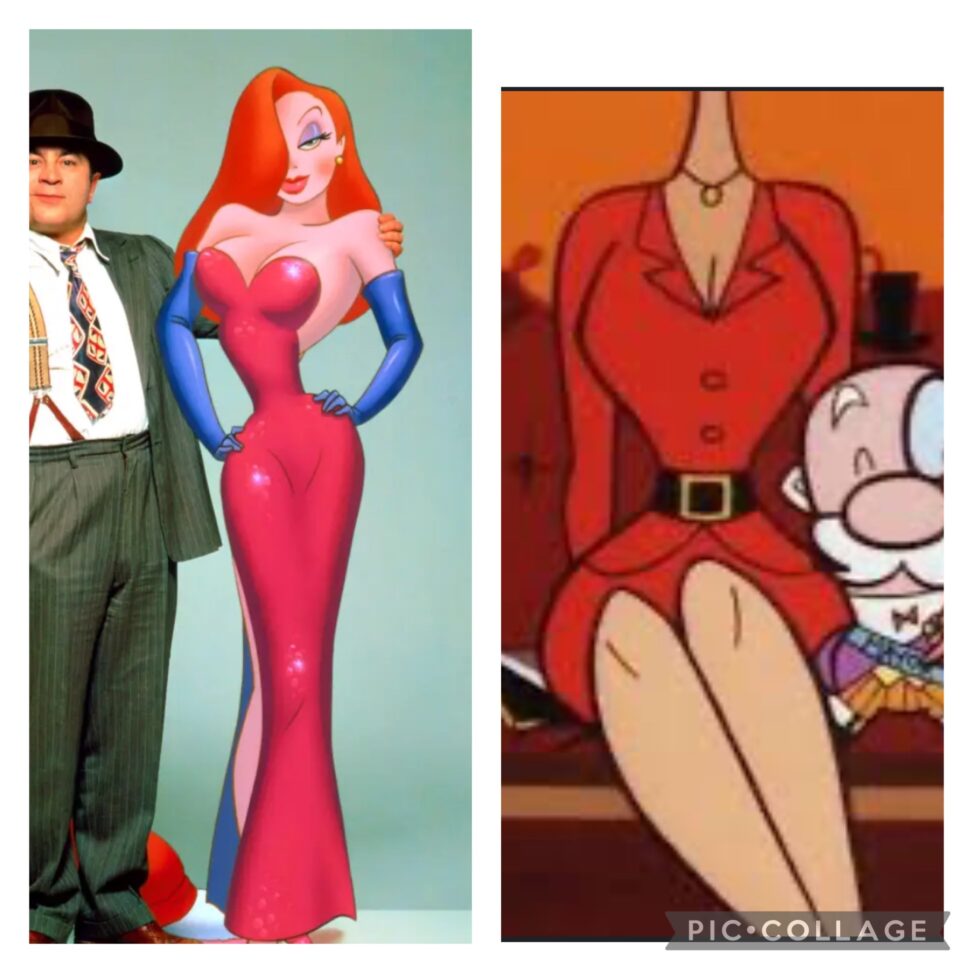Classic cartoons like Looney Toons and Power Puff Girls are believed to be created for children. They are designed to provide simple entertainment with no real message. However, cartoons have been used to push a masculine superiority agenda for decades. Popular animation studios like Warner Bros. and Disney spent many years creating cartoons with no female leads, sometimes not even including a female character. When they did include a female, the character was heavily sexualized and used to reinforce domestic gender roles. This is harmful, as children and specifically young girls, begin to compare themselves to these characters. Unrealistic beauty standards and limited representation fuel women’s need to be liked by men. Cartoons made by men, for the male gaze, created ideals that young women cannot obtain.
For example, Ms Sara Bellum from the Cartoon Network’s “Power Puff Girls” is simply a body. Appearing for the first time in 1998, Ms Bellum is a voluptuous, curvy, objectively sexy female body with no head. Her head is often cut out of the screen, leaving only her body for the viewer to see. Her face is shown once in a special episode, but it is mostly covered by her long red hair and only shows pouty red lips and one eye with long cartoon eyelashes. Ms Bellum speaks with a gruff, throaty, and flirty tone, alluring to her sex appeal. While her character is the secretary of the male mayor, she often solves problems the mayor cannot. Despite her important role in the government, she is reduced to a sex icon. Her curves and ditzy demeanor shadow her grit and tenacity to provide solutions for the mayor. As Klein states “social learning theory would predict that people of all ages (and young people in particular) will learn a great deal about physical appearance, social expectations for what is good-looking versus ugly, and the social consequences of being unattractive, just from being exposed to attractiveness-related media content”. Ms Bellum is a creation of what is the ideal physical appearance to attract a man. Created by men, this image has negative effects on young girls who are navigating changes in their body and shows them the standard men have created.
Another example of over sexualized characters is Jessica Rabbit from Who Framed Roger Rabbit, a Disney cartoon from 1988. This character is often referred to as the original cartoon sex icon and is famous for her whimsical persona. Like Sara Bellum, she has long red hair that covers one eye, an unnaturally small waist with curvy long legs. Jessica Rabbit and Ms Sara Bellum appear to be around the same age in their respective cartoons. Both characters resemble late 20s white women, and are clearly heterosexual. This is demonstrated by their interactions with men on the shows, often batting their eyelashes and blushing when spoken to by men. Both characters wear revealing clothing that bring attention to their breasts and shapely legs. An interesting similarity is that both characters are dressed head to toe in red. In a study from 2012, red is described to be a “signal of sexual receptivity”. Additionally, men were found to be more attracted to women wearing red, seeing them as more sexually desirable. Having both women painted in a red costume that hugs all their curves creates an even more sexually charged character for men to adore. This is a subtle way both cartoons attract male viewers and adjust women to adhere to the male gaze.
In both Power Puff Girls and Who Framed Roger Rabbit, both characters are support characters. Ms Sara Bellum is the secretary for the mayor, and Jessica Rabbit is Roger Rabbit’s husband. In both cartoons, the two’s characters are used to build up and support their male counterparts. The Cartoon Network, a subdivision of Warner Bros. “anarchic cartoons created the portrayal of female characters in a madonna–whore duality”. Warner Bros. uses the female form as a tool, to objectify or ridicule, or both. This narrative that women are only a beautiful tool for men is damaging, considering these cartoons are likely to provide young people with some of their earliest notions regarding attractiveness and appearance-related standards/expectations. A 2006 study found that “animated cartoons, we both reflect and shape social values about physical attractiveness, and help to form children’s initial notions of what it means to be pretty, handsome, ordinary-looking, or unattractive”. Reducing a female character down to their body, not even giving them a face, is extremely damaging to young girls.
While cartoons have changed over the years, TV Channels like Teletoon Retro and Cartoon Network still show these vintage cartoons. As a result, this damage narrative is still being shown to children in 2025. Many people overlook the sexualized women and claim that cartoon style to be in the past, but continuing to show them reinforces its sexist agenda. Giving young girls the idea that they are only a body, that their self worth relies on whether or not a man gives them attention, is damaging. Young minds are vulnerable. Girls should be shown that they do not need a man to have self worth, and they are more than a pair of boobs.
References
Klein, Hugh, and Kenneth S. Shiffman. “Messages about physical attractiveness in animated cartoons.” Body image 3, no. 4 (2006): 353-363.
Pazda, Adam D., Andrew J. Elliot, and Tobias Greitemeyer. “Sexy red: Perceived sexual receptivity mediates the red-attraction relation in men viewing woman.” Journal of Experimental Social Psychology 48, no. 3 (2012): 787-790.
Perea, Katia. “Gender and cartoons from theaters to television: Feminist critique on the early years of cartoons.” Animation 13, no. 1 (2018): 20-34.


Dev
I must add that your review which contrasted Jessica Rabbit to Ms. Sara Bellum, was a truly well-considered analysis. You did a fantastic job analyzing the characters’ parallels and differences, particularly about how they either support or contradict conventional gender norms.
The level of detail in your explanations was one of the things that I truly appreciated. You described how the characters’ clothes, body language, and even the colors they wore influenced the idea of the male gaze, going beyond simply stating that they were sexualized. That level of detail demonstrates your understanding of how audiences are influenced by media and greatly improves your argument.
Your main points were very clear: Ms. Sara Bellum and Jessica Rabbit are both there to help male leads, which makes them more objects of desire than autonomous characters. Also, you presented a convincing case for how these representations can influence young girls’ perceptions of themselves, which is a significant and pertinent topic.
Your analysis gained credibility since you supported your arguments using relevant scholarly sources. It could have been much more powerful, in my opinion, if you had mentioned how contemporary cartoons are moving away from these clichés. Are we still witnessing the same trends, or are more recent animated female characters eschewing these stereotypes? That would have given your conversation an additional intriguing dimension.
An examination of how viewers respond to these personalities was one element I thought was lacking. Although you did a great job of analyzing the purpose of their designs, it would have been interesting to have some discussion of how various viewers—male and female—view them. Are these preconceptions challenged by fan interpretations? What impact has media criticism had on our current perceptions of these characters? Your critique would have been even more insightful if you had included that.
Your use of graphics undoubtedly made your remarks more compelling. The exaggerated features, the framing of their bodies, and the visual signals that made them so blatantly constructed for the male gaze were all readily apparent. Having those pictures strengthened your case.
This was a really good submission all around. It may be even more illuminating with a bit more investigation into how audiences perceive animation and its changing tendencies. Fantastic work!